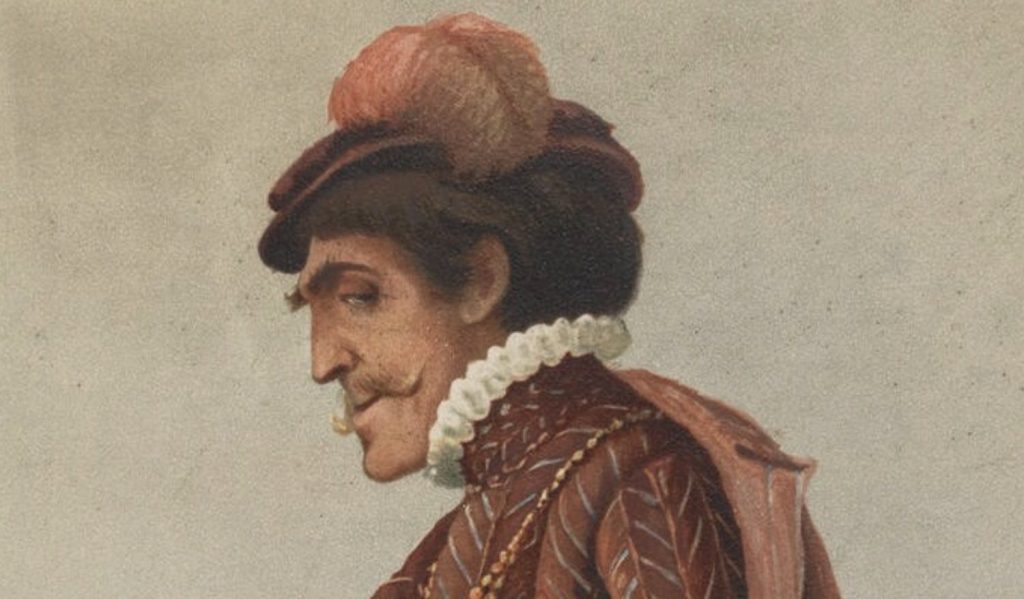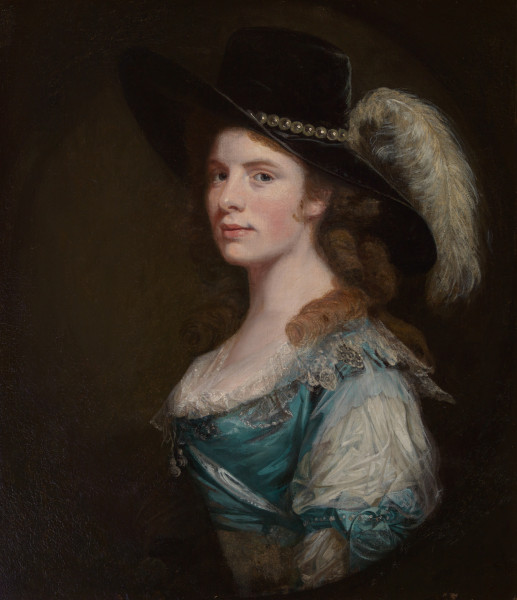OTD in early British television: 13 March 1933

John Wyver writes: At 11pm on Monday 13 March 1933, the BBC’s 30-line transmission from Studio BB in the basement of Broadcasting House featured selections from ‘The British Theatrical Loan Exhibition’ that was currently on view at Dudley House in Park Lane.
The presentation also featured the then 31-year-old Ralph Richardson, attired in the costume of Benedick as famously played by Sir Henry Irving (above, detail) giving a few lines from act 2 scene 3 of Much Ado About Nothing, although as a previous blog post revealed, this was not the first Shakespeare performance on British television.
Nor was this the first broadcast showcasing artworks and precious objects from a major London exhibition. That tradition began the previous October, with selections introduced by Lord Lee of Fareham from the ‘Art Treasures Exhibition’ at Christie’s, and had continued in January 1933 with pieces from ‘The Loan Exhibition of the Reign of Queen Elizabeth’.
For the first of these broadcasts, producer Eustace Robb persuaded Lord Lee, collector, philanthropist and founder in 1932 of the Courtauld Institute of Art, to speak about a selection of artworks placed carefully before the flickering scanner beam by three art handlers.
In the monthly journal Television ’Spectator’ also approved of the peer’s comments to the effect that,
Television was a means for awakening and stimulating public interest in works of art, and people were assisted to recognise and admire what was beautiful or good and to reject what was ugly or bad.
Lord David Cecil was the aristo who hosted the broadcast of objects from the Queen Elizabeth show, but no comparable figure appears to have been required to introduce the works for the March broadcast.
The Theatrical Loan exhibition had been mounted in aid of the building fund of the Paddington Tuberculosis Dispensary, and featured works of art related to the stage from the early sixteenth century to the early years of the twentieth. Reflecting for the Burlington Magazine primarily about the paintings on show, ‘L.G.-S.’ wrote:
In addition to providing means to tracing the aesthetic development of the stage during this period, it incidentally throws some interesting socialogical light upon the progress of the mime from a status of vagabondage to one of no mean social position.
The Television reviewer of the 30-line broadcast noted:
Two pictures shown were not so effective as those leant by the Duke of Beaufort on a previous occasion. This time the pigment was not sufficiently bold in light and dark shades to yield a clear image.
A more exacting selection must be made if paintings are to be seen again; but in fairness I must say that the eyes and hat, bearing a light ostrich feather of the period, were readily discernible in the fine picture of Mrs Whitlock by Ovey.
I take this to be the painting referred to, from the collection of the Garrick Club, although here it is attributed to John Downman:

Television continued:
Small china busts of Shakespeare, Milton, Edmund Keen and others also failed to register fully, though the larger terra cotta (sic) of Edward Garrick made a clear impression, possibly because it had no glaze to reflect the light.
Despite the constraints imposed by the limited definition of the 30-line images, Eustace Robb was particularly proud of his presentation of art exhibitions which, he claimed in a 1933 internal memo, marked ‘the beginning of an era when the public will be taught to appreciate great works of art, seeing them in their homes at the same time that the finer points are demonstrated by an expert lecturer.’
Image: in the header is a detail from ‘Sir Henry Irving’ [full artwork via the link], a watercolour painted in 1833 by Carlo Pellegrini depicting the actor in his costume as Benedick; © National Portrait Gallery, London.
Leave a Reply